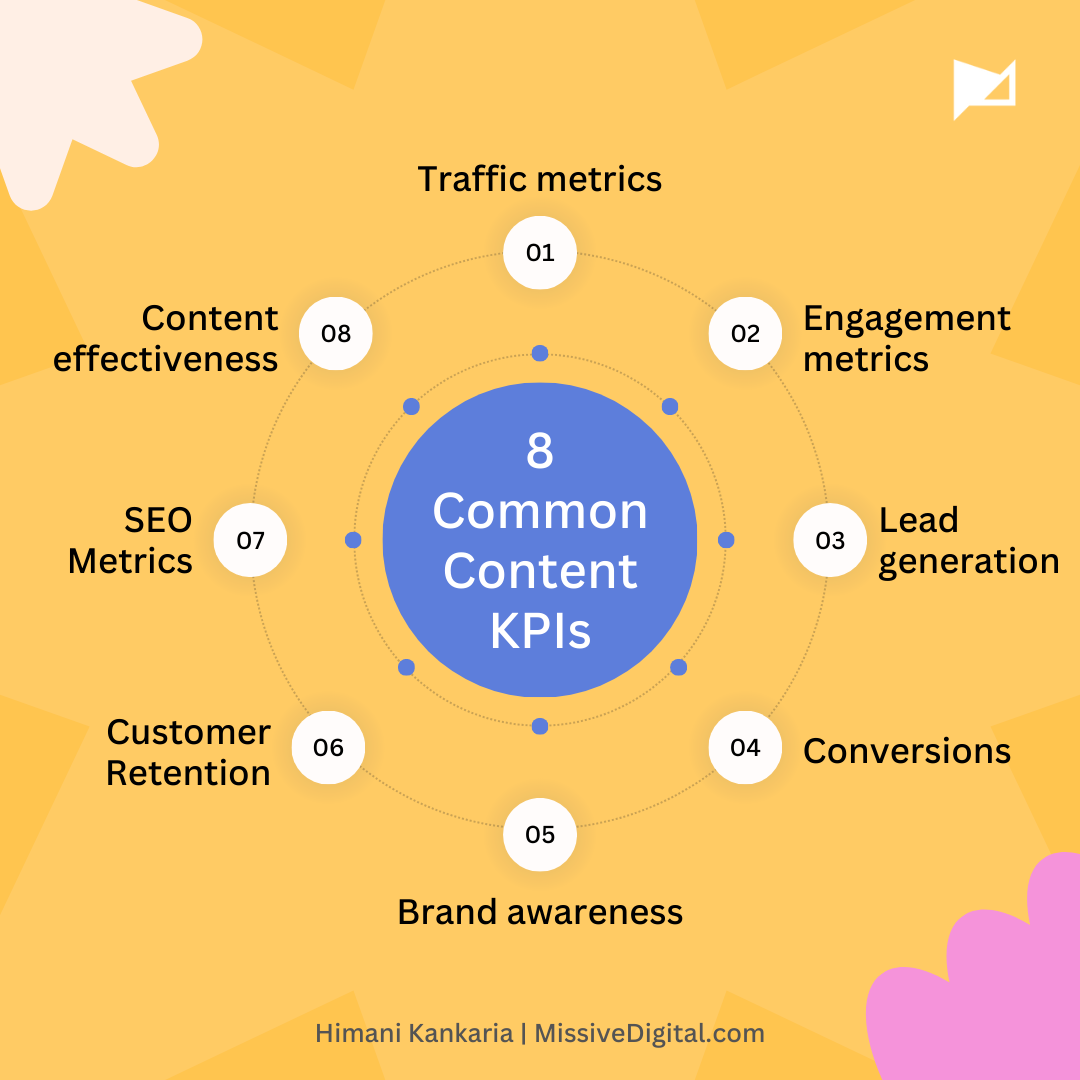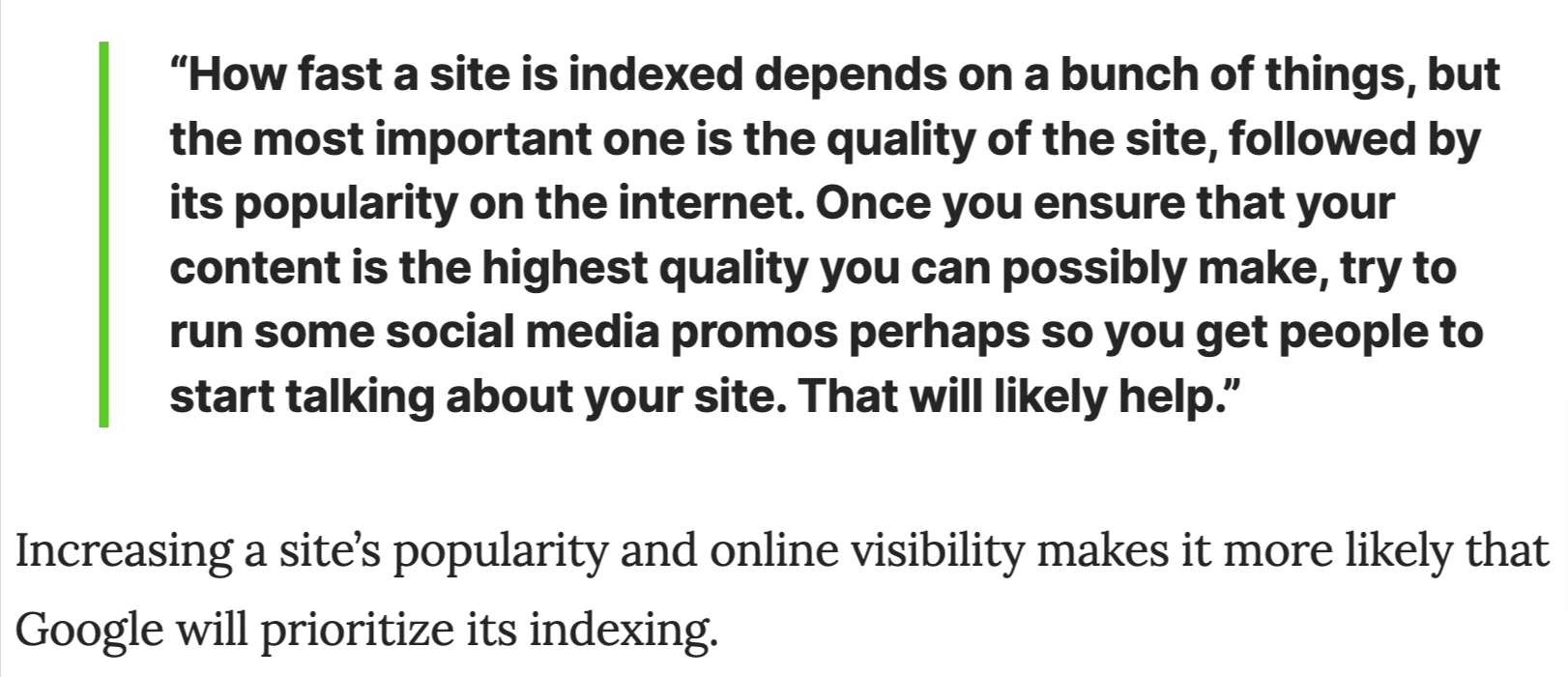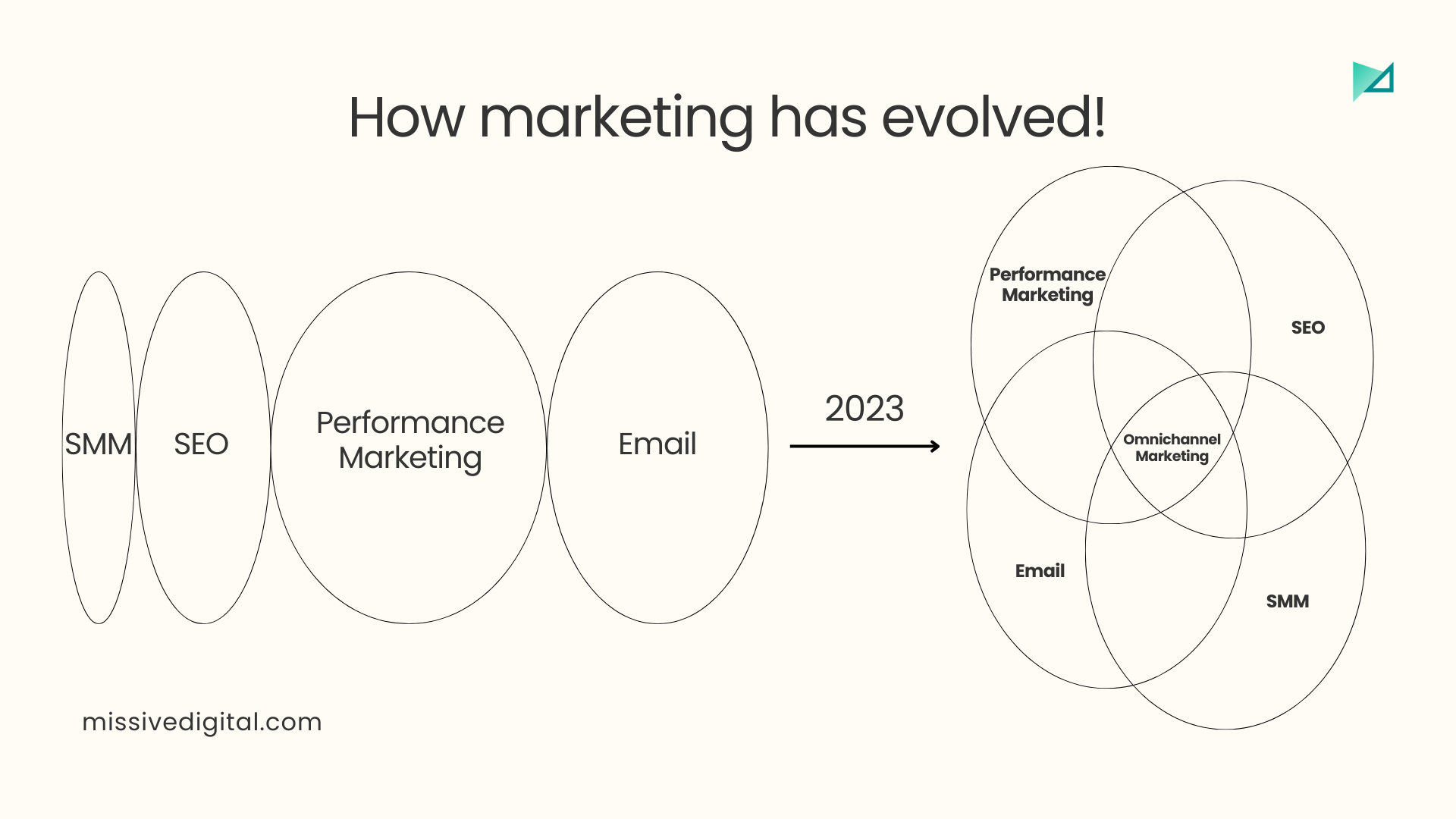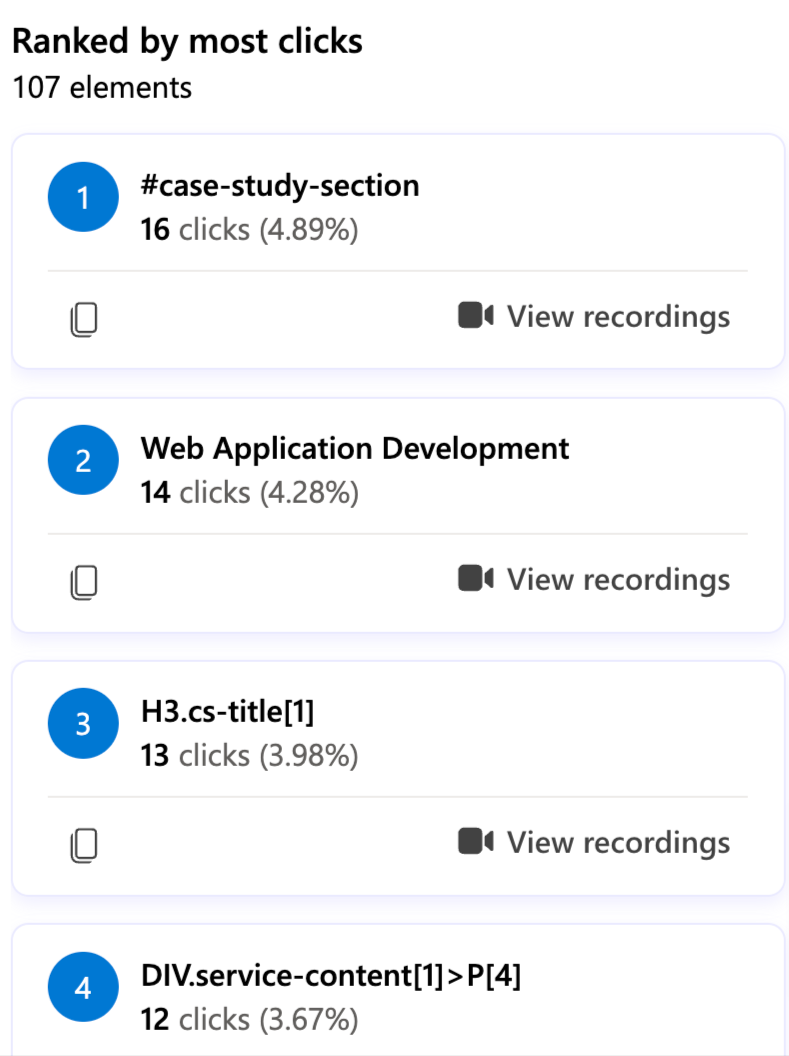SEO
When Does a Content Strategy Fail? 11 Factors to Blame

The success or failure of your content strategy is very subjective.
It can be nuanced and multifaceted due to many factors – varied objectives, long-term impact, changing goals, complex data interpretation, content attribution, and many other external factors.
But then I’ve heard many business owners and marketing managers complaining about not seeing results despite publishing 12-20 blogs a month, aggressive social media promotions, and segmented email drip campaigns.
It could be because the content strategy itself is flawed, which can cause it to fail in achieving its intended results.
And because there can be many flaws in a content strategy, I would like to highlight the critical ones that most commonly cause your strategy to fail.
1. Not Sticking To Your Target Audience
The most common yet highly critical reason behind the failed content strategy is deviating from your target audience.
While we have worked with many IT companies, we have seen this as a major issue. They usually have some of these target audiences:
- Tech Business Owners.
- Non-tech Business Owners.
- CTO or Project Managers.
- Developers.
But most IT companies follow the trends their competitors have chosen, irrespective of what their sales team wants.
- They want to sell Flutter development if their competitors start delivering that.
- If their competitors have started doing it, they want to shift to staff augmentation from custom end-to-end development.
- They want to start writing technical blogs if their competitors have written them.
It’s not their fault because they are trying to follow trends in the IT industry. But in following the trend, they unknowingly mix up all their audiences.
Deviating from your target audience can happen unintentionally due to shifts in business goals or strategies, inadequate or outdated audience research, customer base expansion, data misinterpretation, changes in industry dynamics, and more.
However, this is problematic for content strategy, because it results in content that is misaligned, inefficient, and ineffective in reaching and engaging the right people.
Why? Because:
- You create irrelevant content for other sets of audiences.
- You waste time, effort, and budget.
- This results in inconsistent brand messaging.
- You may attract the wrong type of leads or lower conversion rates.
- With all these, you cannot measure the effectiveness.
- And hence, the ROI is never justified.
A successful content strategy should be laser-focused on addressing the intended audience’s needs, building a strong connection with them, and ultimately driving meaningful outcomes for the business.
2. Missing Out On The Purpose Of Creating The Content
When planning content topics, you must know why you want to create this content. Because until you know the purpose, you can’t define its success metrics.
And when you don’t know the success metrics, your content remains orphan, cannibalized, or unhelpful.
With more such content, you only keep investing where there are no returns.
And never stick to the below as the only purpose of your content:
- Because competitors have written them.
- Because we want rankings.
- Because we want all of our blogs to generate sales qualified leads (SQLs).
- Because we think such topics would be helpful to our audience.
- Because our product team wants to focus on that
- Because our sales team wants to target this list of features to be promoted across a particular geography.
Where are the audience’s needs here?
Consider what the audience wants to read or consume while buying your products or services.
Your purpose should be divided into two:
- What do readers expect out of this content?
- What will we achieve when the user consumes this content and is happy about it?
I hope that’s clear to ensure your content strategy doesn’t fail.
3. Not Setting Up Each Content’s KPIs And Its Timeline
We know the purpose of creating content, but what if we don’t know how to measure whether the purpose was fulfilled?
That also will lead to the failure.
Most content calendars include the following basic things:
- Content topics.
- Content types.
- Target audience.
- Team involved.
- Publication timelines.
- Keywords data.
- Word count.
- Graphics requirements.
- References.
But people don’t talk enough about what each piece of content has to deliver. We never used to add any content metrics in our SEO content strategy.
Content KPIs can vary depending on the content’s purpose and your overall content strategy.

But just defining the KPIs is not enough; setting up their timelines ensures they are achieved.
Let me share what happens to your content strategy if you haven’t set the content KPIs and their timelines to achieve:
- Directionless content creation – You publish a blog post without clear KPIs or timelines. The content covers a general industry topic but doesn’t tie into specific business goals. As a result, it doesn’t drive relevant traffic or contribute to lead generation.
- Ineffective resource allocation – You invest significant resources in creating a series of YouTube videos without defining KPIs. The videos receive views, but without KPIs, it’s unclear whether they contribute to brand awareness, customer engagement, or sales growth.
- Measurement challenges – You regularly publish email newsletters to a subscriber list without establishing KPIs and timelines. You observe that the open rates and click-through rates vary across different newsletters. Still, without predefined KPIs, you are uncertain whether the content needs improvement or the variance is within the normal range.
- Missed opportunities – If you’re into the ecommerce or D2C segment and fail to define the KPIs and the timeline for your holiday-themed content, you miss out on capitalizing on the season for maximum visibility or sales. After all, there’s no point in me sharing Black Friday marketing hacks for marketers when Black Friday has already been and gone.
- Inconsistent performance – When you’re writing different types of blogs without the defined KPIs and timelines, some pieces might perform well. In contrast, others underperform, and there’s no basis for comparison or improvement. This inconsistency makes it challenging to identify what types of content work best.
- Difficulty in adaptation – While creating a content strategy for a software review site doesn’t have a timeline for updating the articles during significant software releases, it can drastically lose rankings and website traffic. Without defined KPIs and timelines, it’s harder to identify when adjustments are needed. You may not notice content that’s not meeting expectations until much later.
- ROI uncertainty – The absence of KPIs and timelines makes it challenging to calculate the return on investment (ROI) for your content efforts. You won’t know if the resources invested in content creation yield the desired results.
- Demotivation for teams – Content creators and marketers may become demotivated when they don’t see clear objectives or results associated with their work. This can lead to a lack of enthusiasm and dedication to following the content strategy.
- Inability to learn and improve – The lack of defined KPIs and timelines makes it challenging to learn which of your blogs are supposed to drive marketing qualified leads (MQLs), newsletter sign-ups, embedded video clicks, move to landing pages, SQLs, and more. So, you won’t have data-driven insights to make informed decisions and refine your strategy over time.
To avoid all the above pitfalls, let’s have a structured approach so that your content efforts are purposeful, measurable, and adaptable, leading to a more effective and results-driven content strategy.
4. Measuring Leads/Conversions As The Only KPI
We just finished discussing that KPIs are important – but all KPIs are important, not just lead generation or conversions.
However, because the top management of startups and ecommerce business owners have strict timelines for reaching the goals of specific annual recurring revenue (ARR) and turnovers, they ask their marketing teams to focus on strategizing content for generating leads or business.
But here are a few very critical reasons why your content strategy fails if you only focus on leads or conversions:
Narrowed Focus
Relying solely on leads or conversions as KPIs can create a narrow focus on the end of the sales funnel.
While these metrics are important, they don’t account for the full customer journey.
Content should address various stages of the customer lifecycle, from awareness to consideration and retention.
We got an inquiry last month from someone who was into the home lifestyle industry in the US, and they were just starting in this highly competitive market.
We took days to build a strategy for them on how to showcase them as one of the emerging brands, and they just wanted to focus on whether our strategy would sell out their extensive inventory before a year.
Being in a B2C industry, one must know that 66% of consumers are now allocating additional time to research and validate their purchases due to the cost-of-living crisis, as per the report by Akeneo.
So, if you’re not present at every stage of their research, you’ll lose them forever.
Misalignment With Content Types
Different types of content serve various purposes within the marketing funnel.
For instance, blog posts are typically better suited for creating awareness, while in-depth whitepapers may be more effective for B2B lead generation.
If lead generation is the sole KPI, the strategy may not leverage the full potential of diverse content types.
This means that even if your sole focus is driving more whitepaper downloads, you would need the below content types to support:
- Landing page content to encourage visitors to download.
- Blog posts to introduce the topics covered in the whitepapers and links to the respective landing pages.
- Email content to promote your whitepapers to your subscriber list and guide them to the landing pages.
- Social media posts to highlight the whitepapers’ benefits and encourage followers to access them.
- Guest posts or articles in industry publications to reach a broader audience and direct readers to your whitepaper downloads.
- Compelling ad copy for paid campaigns, such as pay-per-click (PPC) or social media ads, to drive traffic to the whitepaper landing pages.
No matter what content type you choose to drive conversions, you need support of other kinds for maximized output.
Higher Customer Acquisition Costs
Not all visitors arriving at your site are ready to purchase or provide their contact information.
Many are in the early stages of the buying process, gathering information and evaluating their options.
But when the sole purpose is to drive conversions, the content strategy must consider paid advertising and email outreach. Paid advertising may directly bring you instant conversions but may be more costly in the long run.
Similarly, suppose you’re in the early stages of your business.
In that case, email outreach doesn’t always bring faster results, as your prospects might feel a lack of brand authority due to the lack of other content types on different channels for their research.
This ultimately results in higher customer acquisition rates, which cannot help you sustain for long.
A successful content strategy should not focus solely on immediate lead generation.
It should be balanced with content designed for brand awareness and consideration, essential for attracting organic, social, and referral traffic, building trust, and nurturing long-term customer relationships.
5. Not Emphasizing The User And Their Content Experience
User experience – we know that it matters for your marketing success.
But what’s content experience?
Content experience refers to how users interact with and perceive content on various digital platforms, such as websites, mobile apps, social media, and other digital channels.
It encompasses the overall impression, engagement, and satisfaction that content creates for the user.
Various elements, including design, usability, interactivity, and the quality of the content itself, shape the content experience.
In short, content experience is nothing but all about fulfilling the user’s expectations from content, such as:
- Relevance – Your users interact or engage with your content only if they find it relevant to their needs and interests.
- Quality – Your users want to consume content that’s accurate, well-researched, and well-crafted to meet their needs.
- Consistency – Whether you’ve consistently added such quality content for their queries also defines whether your content meets their expectations.
- Clarity – Users seek clear and easily understandable content using plain language, structured layouts, and concise explanations.
- Interactivity – Be it compelling storytelling or media, your users should find your content interesting.
- Trustworthiness – Users need to trust the source. Transparent sourcing, evidence-based claims, and consistent brand messaging establish trust.
- Accessibility – Users with disabilities expect content to be accessible. Compliance with accessibility standards ensures a broader audience can consume content.
- User-centric design – Users anticipate user-friendly content and navigation. Prioritizing user experience (UX) design and responsive layouts fulfills this expectation.
- Personalization – Users look for tailored content experiences. Using data to deliver personalized content based on user preferences meets this expectation.
- Emotional connection – Users desire content that resonates emotionally. Creating content with relatable stories, empathy, and emotional appeal fulfills this expectation.
- Solving problems – Users expect content to address their problems. This is achieved by providing practical solutions and actionable advice.
So, if we don’t ensure that every content created from your content strategy fulfills the users’ expectations, they will never contribute to the marketing’s success.
After all, winning marketing is all about UX – delivering a fantastic user experience and fulfilling users’ expectations from the content they’re consuming.
 Image created by author, November 2023
Image created by author, November 2023
6. Unable To Understand The User Behavior On The Page
Content strategy is not only for new topics. Hence, an inability to understand user behavior on a page reflects a lack of critical insights and data for optimizing content and achieving your strategic goals.
Hence, any content we create for our website needs to be monitored not just using GA4 or any analytics plugin, but also using heatmaps and session recordings.
Let’s talk about a few insights you only get when you monitor the heatmaps and recordings to understand the user behavior on the page:
- Incomplete forms – If your landing pages include lead generation forms, but users rarely submit them, an inability to understand user behavior means you won’t know where users are dropping off in the form-filling process. This can hinder lead generation efforts.
- Neglected content sections – On a blog post, you may have sections with important information. Still, if users rarely scroll down to read them, you’re missing out on engagement and conveying valuable insights. Without user behavior insights, your content strategy may not address this issue.
- High cart abandonment – An ecommerce site might notice that many users add items to their shopping cart but abandon it before completing the purchase. By monitoring user behavior, you can identify that users often drop off at the shipping cost calculation step. This insight allows you to make necessary adjustments, such as offering free shipping above a certain purchase amount, to reduce cart abandonment and improve the content of the shipping cost explanation.
- Unoptimized landing pages – Suppose your landing page for a webinar registration isn’t performing well, with low sign-up rates. User behavior tracking shows that most visitors leave the page without scrolling down to view the registration form. This data indicates that the content at the top of the page is not engaging.
GA4 gives you data, but the heatmaps and session recordings give you the reason behind that data. If you have high bounce rates, you can find out why you have them.
And when you have those insights, you can create content strategies that hardly fail.
7. Investing A Lot In Product/Brand Content
Like the sole purpose of lead generation, we understand the reason behind building the brand or product-focused content, which we call bottom-of-the-funnel (BoFu) content.
But investing a lot in such content can bring the below challenges:
- It can overwhelm the audience with sales-oriented messaging, leading to disengagement and alienation.
- It can lead to content saturation as you won’t find different topics to create content on.
- When users encounter the same messaging repeatedly, they may become desensitized to it.
- It can limit diversity and creativity in content creation.
- Branded content is not always searched for, so it may never drive better SEO results.
- Consistently putting out product-focused or branded content will make users build a perception about your brand and may never engage, even when you create educational content.
While product/branded content is essential for sales and conversions, an excessive focus on this type of content can lead to a content strategy failure by limiting audience engagement, diversity, and trust and missing opportunities to attract and nurture leads effectively.
So, even if you have targets for conversions, think of a balanced content strategy to make sure you don’t lose your audience for life.
8. Compromising On Quality Over Quantity (Especially After AI/ChatGPT)
You must have seen a lot of posts on LinkedIn or X/Twitter on how AI content or SEO has given them steady, hockey-stick growth.
 Screenshot from YouTube, November 2023
Screenshot from YouTube, November 2023
Just publish one content per day, and voila, you’ve got 365 posts in a year with a whopping 5x organic growth.
That’s not as easy as it sounds!
Suppose you also start following this process as is.
In that case, your content strategy may fail miserably, as your industry, business, audience, and more differ from the ones who share such experiences and learnings, and not just that, it also impacts your overall brand reputation.
So, no, I’m not saying they are bluffing.
Still, a lot goes into identifying that one content topic, writing, proofreading, editing, publishing, and optimizing, such as adding keywords, avoiding keyword cannibalization, graphics, and more.
If that’s what you are supposed to do, do it, but it’s not a one-day task.
The people sharing those case studies should also have a strong content strategy in place, emphasizing both quality and quantity, despite using AI/ChatGPT.
9. No Guidance/Brief To The Writers On How To Approach The Content
Yes, content strategy is a plan, and without the right execution, it cannot succeed.
When creating the content strategy, it becomes important to share insights on what content creators should do.
Here, too, you should do it for every content topic, not just for one (or overall).
I always say that not all content creators are subject matter experts; hence, they are not supposed to be always on-point about something.
As the strategist, marketing/product manager, or business owner, you must provide those details, which can be compiled in MS Excel, Word, Google Spreadsheet, Docs, Loom, or Notion.
 Screenshot from author, November 2023
Screenshot from author, November 2023
Such data compilation for the writers are called content briefs, and you need to share them in detail and make sure they understand what you want in the content.
Sometimes, we are not happy with what competitors have written on a topic; in such cases, we also provide the complete outline to the writers.
This makes it completely clear what they need to write, where, and how.
10. Having Miscommunication Or Misunderstanding Between Strategists And Writers
I want to say this loud and clear: Communication gaps and understanding glitches can lead to content strategy failure.
Let me give you an example of a real-time breakup with our client, which they didn’t plan and we didn’t expect.
They kept asking us to convert spoke-page content into hub-like content while they were already ranking on page 1 for the spoke-like content.
However, due to the long-term process of making that hub content rank on other relevant but competitive queries, we were not convinced as SEO pros and couldn’t deliver as they expected.
Because it’s a difficult and time-consuming process to rank hub content with highly competitive queries, we were not convinced as SEO pros to accept that change.
If we could get a clear communication behind the purpose of this requirement, the situation would have been different today.
A successful content strategy relies on effective collaboration and clear communication between these key roles to ensure that the content created aligns with strategic goals, resonates with the audience, and delivers the desired results.
11. Unaccelerated Distribution Plan
Yes! This does happen –and happens a lot – with SEO pros.
Has your SEO team ever faced any or all of the below issues?
- You published a lot of pages, but Google is not indexing them.
- You feel some pieces of content on your website took a lot of time, effort, and resources to create, and now, they hardly receive any traffic.
- You’ve been doing SEO for a long time, and you hardly have any keywords driving traffic to your website.
In any of the cases, it’s because your content strategy lacks distribution.
Our B2B clients have their marketing managers as our point of contact (PoCs) for our SEO services. It becomes frustrating sometimes for us to keep convincing some of them to share our traffic-focused content on their social media and email channels.
They believe that the content we have written or planned should be picked up by Google algorithms straightaway.
However, even Gary Illyes recommends promoting the content and increasing the brand’s popularity on social media to resolve the index bloat issues.
 Screenshot from Search Engine Journal, November 2023
Screenshot from Search Engine Journal, November 2023
It was October 2022 when I recommended SEO pros focus on remarketing SEO, which mentioned how other marketing channels can contribute to SEO success. It’s high time now that you use it to your advantage.
Without an accelerated distribution plan, it can undermine your SEO efforts by limiting the visibility, engagement, and authority of your content in the eyes of search engines.
 Image created by author, November 2023
Image created by author, November 2023
And when you don’t care to reach your content to your target audience on search engines, why should search engines either?
Revisit Your Content Strategy To Avoid The Above Pitfalls
Revisiting your content strategy is a dynamic and ongoing process to ensure content strategies are not set in stone.
They should be flexible, data-driven, and focused on delivering value to the audience. Identifying and rectifying these flaws can help ensure your content strategy’s success.
By continually assessing and adapting your strategy, you can maintain its effectiveness and deliver content that resonates with your audience while driving your business toward its desired outcomes.
More resources:
Featured Image: Khosro/Shutterstock

















